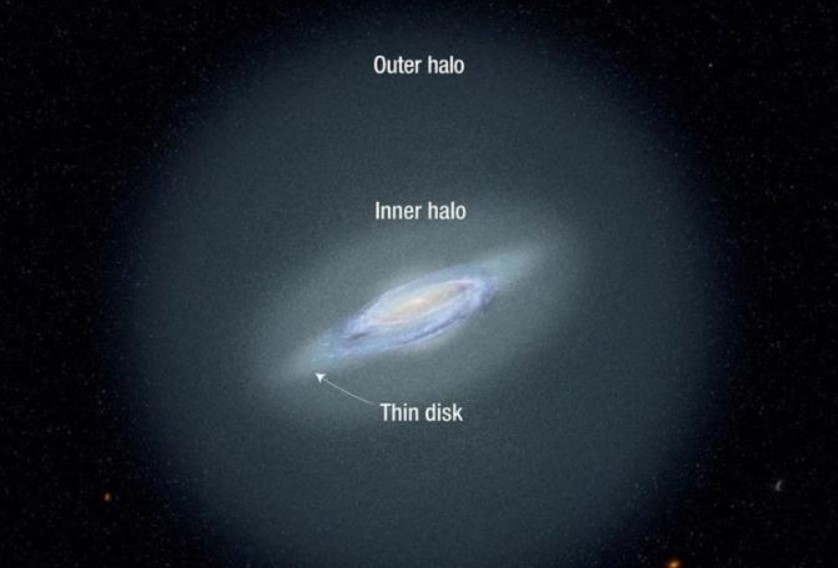Loading…
The Milky Way galaxy is estimated to have between 100 and 400 billion stars. Photo: Reuters
In astronomy, a halo is a spherical collection of globular clusters, individual stars, dust, and gas that surrounds a galaxy. Halos can also take the form of spherical star clouds dominated by a mysterious invisible substance called dark matter. Dark matter is only known by its gravitational influence.
The halo at the edge of the galaxy is up to 1.08 million light-years from Earth. A light year is the distance traveled by light in one year, approximately 9.5 trillion kilometers.
The stars were recorded using the Canada-France-Hawaii Telescope on Mauna Kea Mountain in Hawaii. Scientists have concluded that the outer star cluster belongs to a category of stars called RR Lyrae.
RR Lyrae have relatively low mass and are generally heavier elements than hydrogen and helium. The farthest star has about 70% the mass of our sun. No other star in the Milky Way measures farther than this.
Scientists also refer to stars that inhabit the fringes of the galactic halo as “orphan stars.” Indeed, it is possible that they originated from smaller galaxies that later collided with the larger Milky Way.
“Our interpretation of the origin of these outermost stars is that they most likely originated in the halos of dwarf galaxies and later star clusters merged, or rather, cannibalized by the Milky Way,” Yuting said. Feng, doctor of astronomy at the Institute. University of California. , Santa Cruz, who led the study.
“Their parent galaxy was crushed and digested by gravity. However, these stars remain debris from the merger event,” Feng added.
“The larger galaxies grow by eating smaller galaxies, by eating their own kind,” said study co-author Raja Guha Thakurta, chair of astronomy and astrophysics at the Institute. UC Santa Cruz.
READ ALSO: James Webb Telescope captures brightest galaxy, most distant star cluster

The Milky Way’s halo has an inner and outer layer, much larger than the main disk of the Galaxy. The Milky Way galaxy, with a giant black hole (supermassive black hole) at its center that lies 26,000 light-years from Earth, is believed to have between 100 and 400 billion stars, including the sun, in the solar system. .
Our solar system is located in one of the four main spiral arms that make up the disc of the Milky Way. The halo contains about 5% of the stars in the galaxy. While dark matter dominates the halo, it is also considered part of the fundamental mass and structure of the universe.
(and)

“Amateur problem solver. Hipster-friendly alcohol lover. Beer buff. Infuriatingly humble tv geek.”






